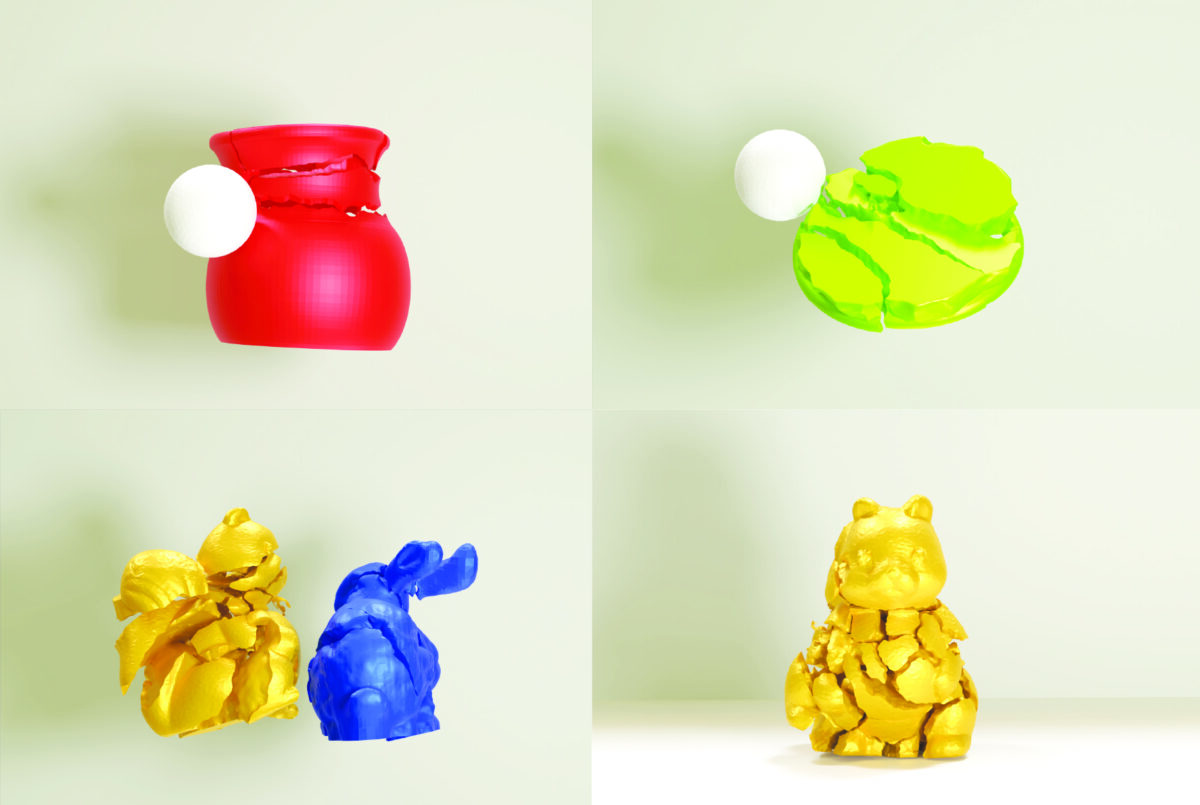In the field of brittle fracture animation, generating realistic destruction animations using physics-based simulation methods is computationally expensive. While techniques based on Voronoi diagrams or pre-fractured patterns are effective for real-time applications, they fail to incorporate collision conditions when determining fractured shapes during runtime.
This paper introduces a novel learning-based approach for predicting fractured shapes based on collision dynamics at runtime. Our approach seamlessly integrates realistic brittle fracture animations with rigid body simulations, utilising boundary element method (BEM) brittle fracture simulations to generate training data. To integrate collision scenarios and fractured shapes into a deep learning framework, we introduce generative geometric segmentation, distinct from both instance and semantic segmentation, to represent 3D fragment shapes.
We propose an eight-dimensional latent code to address the challenge of optimising multiple discrete fracture pattern targets that share similar continuous collision latent codes. This code will follow a discrete normal distribution corresponding to a specific fracture pattern within our latent impulse representation design.
This adaptation enables the prediction of fractured shapes using neural discrete representation learning. Our experimental results show that our approach generates considerably more detailed brittle fractures than existing techniques, while the computational time is typically reduced compared to traditional simulation methods at comparable resolutions.
The project page is here.
Papers
- Yuhang Huang, Takashi Kanai: “DeepFracture: A Generative Approach for Predicting Brittle Fractures with Neural Discrete Representation Learning”, Computer Graphics Forum, Volume 44, Issue 1, e70002, February 2025.
- Yuhang Huang, Takashi Kanai: “Brittle Fracture Animation with VQ-VAE-Based Generative Method”, 23rd ACM SIGGRAPH / Eurographics Symposium on Computer Animation (SCA2024) Posters, No.3, pp.1-2 (Montreal Canada, 21-23 August), 2024.
Paper (publisher’s version)
The following is a slightly older paper that uses cGAN in its neural network, but the concept remains the same.

